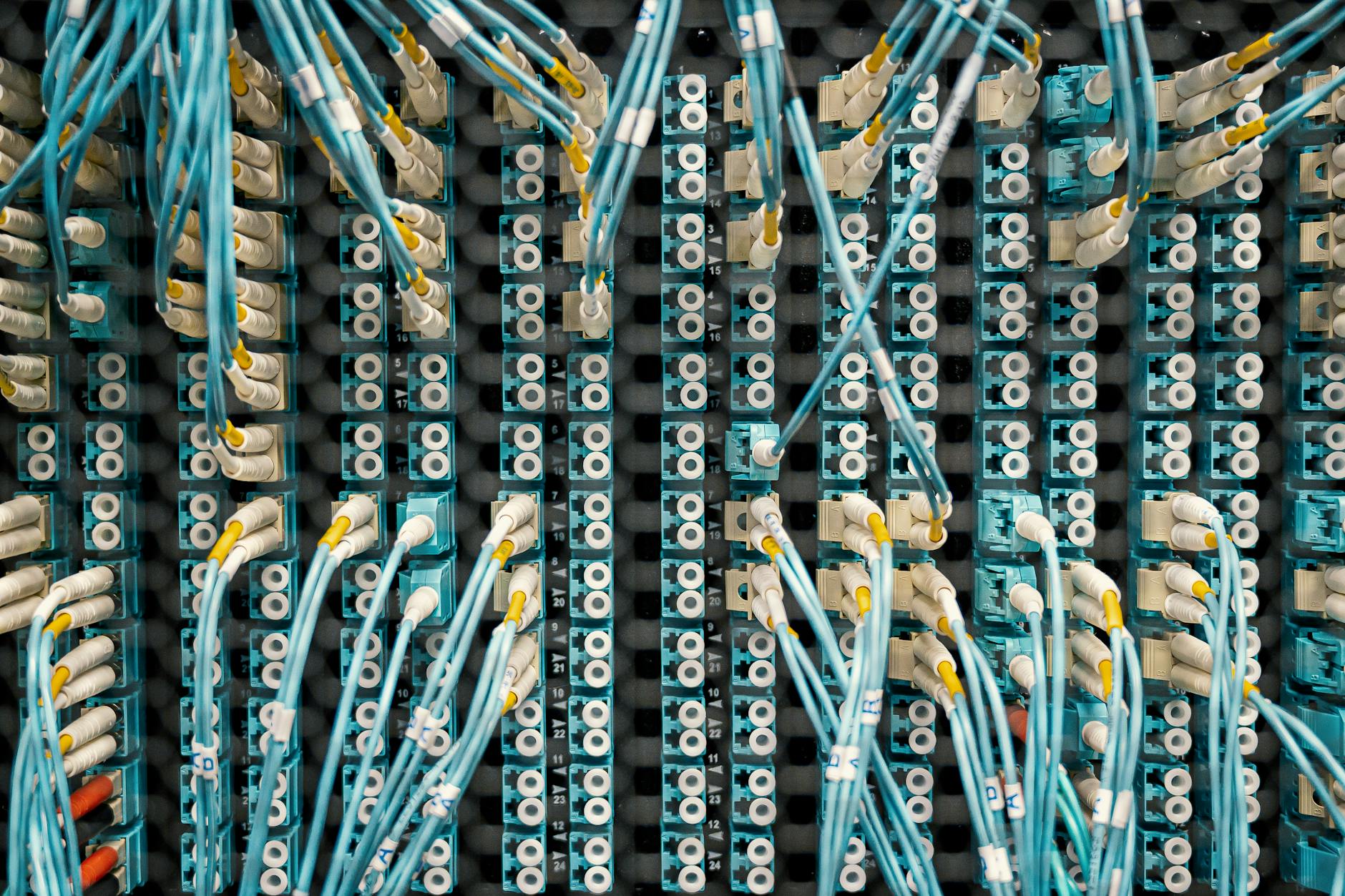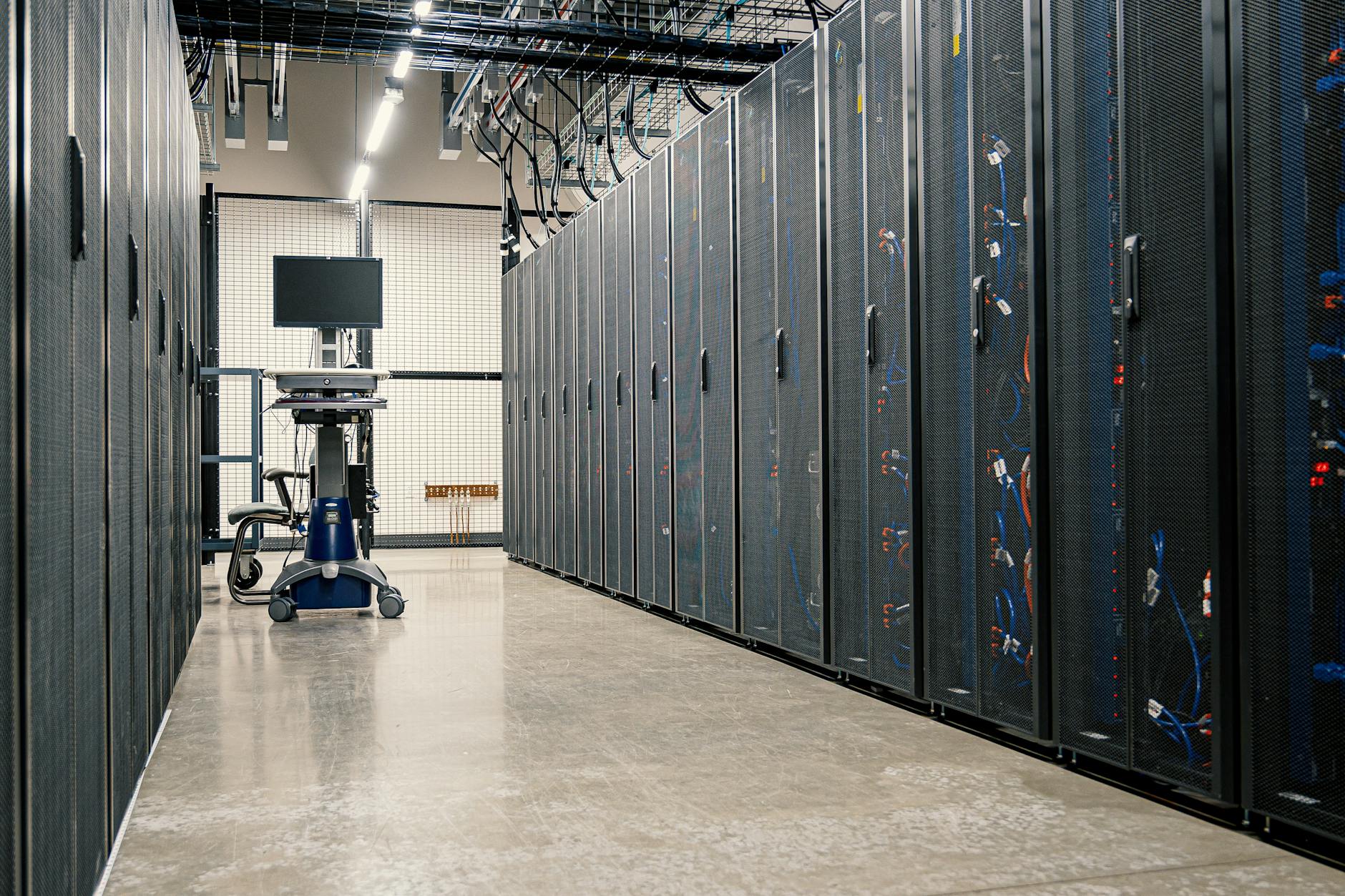Digital Infrastructure’s Future in Latin America
The Current State of Digital Infrastructure
Impact of COVID-19
When COVID-19 came stomping in like an unwanted houseguest, it rearranged the digital scene in Latin America. With folks cooped up indoors, remote work and online education skyrocketed, nudging investments in digital infrastructure like never before. This rush wasn’t just about getting faster cat videos; it was about the heavyweights like 5G networks, private networks, data centers, and fiber-optic cables. Brazil took a step forward with the Clinical Telemonitoring Center, while Jamaica tackled climate hiccups with a snazzy digital platform for risk management.
| Country | Initiative |
|---|---|
| Brazil | Clinical Telemonitoring Center |
| Jamaica | Digital platform for managing climate risks |
If you’re curious about how these cool moves are closing the digital gap, check out our stories on internet connectivity in South America and broadband penetration down south.
Growth in Interconnection Bandwidth
We’re talking bandwidth galore in Latin America, with the region sprinting fast towards the top of the global interconnection charts. By end of 2021, this place was on track for a whopping 59% growth rate, all thanks to tech spenders pouring more than US$70 billion between 2021 and 2025, mostly going into 5G wonders.
| Year | Growth Rate (CAGR) |
|---|---|
| End of 2021 | 59% |
| Period | Investment in Tech (US$ billions) |
|---|---|
| 2021 – 2025 | 70 |
These spending habits reveal a lot about the telecom scene in South America and how data centers are sprouting up like wildflowers in the South America data center market.
The speed at which digital infrastructure is expanding in Latin America throws up its own hurdles but opens doors to new tech adventures. Grasping what fuels bandwidth and where the money’s at helps us ride the digital wave without wiping out.
Investment in Latin America
Private vs. Public Investment
Digital infrastructure investment in Latin America is primarily led by private businesses, with a strong boost from both commercial and development banks. Big projects like data centers often lean on special financing structures to tackle the hefty startup costs. The COVID-19 pandemic reset priorities, pushing substantial cash infusions into areas like 5G, private networks, data centers, and fiber-optic cables.
| Investment Type | Common Applications | Financing Method |
|---|---|---|
| Private Investment | Data Centers, 5G Networks, Fiber-Optic Cables | Bank Financing |
| Public Investment | National Broadband Plans, Rural Connectivity | Government Budgets, International Aid |
Challenges in Bridging the Digital Divide
Latin America faces huge hurdles when it comes to closing the gap between its connected and unconnected communities. Especially in rural areas, internet access lags significantly. This creates an urgent need to pump capital into improving mobile services and building up infrastructure like fiber optics. Without addressing these gaps, the region’s connectivity—and by extension, its economic and social progress—suffers.
Key hurdles:
- Geographical Barriers: Rugged terrains make building infrastructure tough.
- Funding Issues: Public and private entities often run low on cash.
- Technology Gaps: Not having the latest tech parts slows progress.
Interested in how Latin America plans to tackle these hurdles? Check out our piece on south american internet connectivity.
Comparison with Other Regions
When stacked up against regions like the OECD economies, Latin America has stumbled in quickly adopting digital tech. Stuck in an outdated economic model, the region has mostly been an exporter of raw goods and hasn’t fully dived into global value chains. This hesitancy in adopting digital technologies sets it apart from its OECD peers.
| Region | Digital Adoption Rate | Core Investments |
|---|---|---|
| Latin America | Moderate | 5G, Data Centers, Fiber Optics |
| OECD Economies | High | AI, Blockchain, IoT |
But there’s hope! Interconnection bandwidth capacity in Latin America is on a growth spurt, with a projected annual growth rate of 59% through 2021. Operators are also set to throw more than US$70 billion into capital expenditures from 2021 to 2025, a big chunk of it for 5G tech.
For more on the broadband growth in the area, swing by our article on broadband penetration in south america. Curious about the telco field? We’ve got a telecommunications industry in south america piece you might find helpful.
Innovations in Digital Governance
Brazil’s Digital Economy Initiatives
Brazil’s playing a big role under the Digital Economy Working Group (DEWG). They’re all about using tech to drive development that includes everyone (Wilson Center). A major focus is making digital government more reliable and welcoming. They’re highlighting things like digital identity and managing data well. With Brazil at the helm of the G20, there’s a strong push to talk more about these topics and learn how they can boost digital inclusivity.
Focus on Digital Identity and Data Governance
Brazil’s zooming in on two big challenges under the Digital Public Infrastructure (DPI) for the G20 talks. First up is digital identity, essential for ensuring everyone can join in on the digital economy (Wilson Center). They’ve started merging varied state ID systems using the CPF number, a vital step towards securing identities and widening the use of digital ID tools. The goal? Speed up issuing national ID cards in all states while knitting together state and federal efforts for a smooth digital transformation.
The second focus is on making things click well together and sharing data across public and private lines. This move aims to boost digital service quality and spark fresh ideas and business in digital infrastructure in Latin America.
International Collaborations and Partnerships
Brazil’s not going it alone. They’re teaming up with folks from the UK, Denmark, and other global groups to jazz up their digital government efforts (Wilson Center). This teamwork’s already shown success in creating web accessibility guides and sprucing up data setups.
These efforts are crucial to tackling hurdles and seizing opportunities in the telecommunications industry in South America. By working together on digital governance, Brazil’s setting the pace for other South American nations to follow.
| Country | Key Moves | Team-Ups |
|---|---|---|
| Brazil | Digital Identity, Data Governance | UK, Denmark, International Org. |
| Argentina | Growing Digital Infrastructure | World Bank |
| Chile | National Broadband Strategy | United States, EU |
| Colombia | Digital Economy Strategies | Inter-American Development Bank |
For more scoop on economic growth and the south America data center market, check out our other articles.
Insights on Economic Growth
Tech’s Job Promise
So, here’s the scoop: Eleonora Rabinovich over at Google is dishin’ out some big numbers. She’s saying tech’s gonna whip up around 10 million jobs in Latin America by 2025. Yep, you heard that right—a whole lotta folks gettin’ work thanks to the tech boom. It’s like imagining a digital infrastructure party, and everyone’s invited, with jobs rollin’ out across the board. Now that’s a reason to cheer! Who’d have thought tech would be quite the employment rockstar, right?
Digital Agendas Get Serious
Now, let me break it down for ya—over 90% of Latin American countries are diving headfirst into digital agendas, giving them a shiny new roadmap for the future. It’s not just a bunch of fancy tech talk; this is all about getting coordinated, making life better for the everyday Jane and Joe, and keeping the wheels of economic growth humming along. It’s like turning a strategic game plan into real-life improvement for folks across the board—and every country wants a slice of that pie!
| Country | Onboard with Digital (%) |
|---|---|
| Brazil | A whopping 100% |
| Mexico | 95% and climbing |
| Argentina | 92% |
| Colombia | 90% |
Filling That Infrastructure Piggy Bank
Alright, don’t stash your piggy bank just yet—Latin America’s staring down a huge bill to close the infrastructure gap. We’re talkin’ over USD 2,220,736 million by 2030 to hit those heavy duty Sustainable Development Goals. You can’t just find that kind of change under your sofa cushions! They’re saying 59% of this loot goes to build new stuff, while 41% keeps the old stuff ticking over nicely. And trust us, without solid infrastructure, that economic engine ain’t gonna purr.
The region better pony up 3.12% of its GDP every year into building up infrastructure—it’s like oiling a rusty engine to keep it roaring. That’s gotta happen if they want to dodge those potholes in productivity and regional togetherness. Keeping our gear efficient and snazzy is a must if we want to see things take off.
| Sector | Cash Needed (USD Million) |
|---|---|
| Water & Sanitation | 500,000 |
| Energy | 700,000 |
| Transport | 600,000 |
| Telecom | 420,736 |
Even with projected growth rates nudging up to 2.6% over the next few years, William Maloney from the World Bank throws a reality check: it’s not quite up to par for bumping up social mobility and kicking poverty to the curb. This means big bucks need to roll into digital infrastructure if we’re gonna make economic growth more than just wishful thinking.
For a deep dive into the digital vibes in the region, jump to our article on south american internet connectivity. For juicy details on broadband, check out broadband penetration in south america. And if you’re feelin’ curious about the nuts and bolts of infrastructure, our south america data center market is your treasure map to all things digital in this neck of the woods.
Fintech Ecosystem Expansion
Latin America’s been on a roll lately with fintech going big, changing how folks bank and manage money. We’re about to break down this boom, check out who’s leading the charge, and see how it’s helping folks who usually are left out by regular banks.
Growth in Number of Startups
Between 2017 and 2023, fintech startups in Latin America and the Caribbean skyrocketed by 340%. Back in 2017, there were 703 companies; by 2023, they had jumped to 3,069. This explosion shows just how innovative and fast-moving tech finance is in these parts (Inter-American Development Bank News).
| Year | Number of Fintech Startups |
|---|---|
| 2017 | 703 |
| 2018 | 1,031 |
| 2019 | 1,506 |
| 2020 | 2,178 |
| 2021 | 2,601 |
| 2022 | 2,835 |
| 2023 | 3,069 |
Representation by Countries
Some countries in Latin America have grabbed the fintech wave tighter than others, and they’ve got the stats to prove it. Peru, Ecuador, the Dominican Republic, Uruguay, Costa Rica, and Guatemala have been outpacing themselves with an average annual growth rate of 44% for fintech operations from 2017 to 2023. They’ve upped their stake from 7% of the region’s fintech scene in 2017 to nearly 15% by 2023 (Inter-American Development Bank News).
Here’s a little scorecard for the frontrunners:
- Brazil: Takes a strong lead with 24% of the fintech pie.
- Mexico: Comes in close with 20%.
- Colombia: Commands 13% of the fintech space.
Argentina and Chile are solid contenders too, each claiming 10% (Inter-American Development Bank News).
| Country | Percentage of Total Fintech Companies |
|---|---|
| Brazil | 24% |
| Mexico | 20% |
| Colombia | 13% |
| Argentina | 10% |
| Chile | 10% |
| Others (Peru, Ecuador, etc.) | 23% |
Focus on Underbanked Populations
A huge chunk of fintech’s momentum in Latin America is all about reaching folks without bank accounts or with limited banking access. By 2023, 57% of these companies honed in on this group, up from 36% in 2021 (Inter-American Development Bank News).
Even though there was a dip in venture capital pouring into fintech between 2021 and 2022, the industry still managed to rake in $7.8 billion. This accounted for 43% of all venture capital in the region, solidifying fintech as a key player in attracting foreign investment (Inter-American Development Bank News).
Fintech’s growth is more than just numbers—it’s helping to build better digital connections across Latin America. As these tech-savvy companies keep growing, they bring along more inclusive banking options and play a part in boosting the economy and narrowing the digital gap. We’re keeping tabs on how broadband access in South America supports these fintech initiatives—vital for keeping the progress rolling.
DiDi Chuxing’s Market Adaptation
Entry into Latin America
So, back in 2018, DiDi Chuxing took its first step into Latin America. The company strutted in like it owned the place, especially when it came to its food delivery service, DiDi Food. This wasn’t just a toe-dip into the shallow end; they jumped right in and splashed around, managing to leave a mark. Things fired up nicely, and the service really caught on, giving other food delivery players a run for their money (Carnegie Endowment for International Peace).
Strategic Alliances and Initiatives
DiDi’s ability to fit like a glove in the Latin American market wasn’t just by chance. It came down a lot to some clever partnerships and initiatives. By getting in bed with governments and civil society groups, DiDi showed they weren’t just there to make a buck but were in it for the long haul, tackling things like road safety, public security, and gender equality.
Key Initiatives:
- Road Safety: Team-ups with groups like the Association of Traffic Accident Victims in Peru have been on the cards.
- Public Security: Hookups with firms like Prosegur in Argentina and Chile have bolstered their presence.
These strategic dealings have been crucial for DiDi, helping them weave through the tangled web of Latin America’s market, dealing with things like the informal labor scene and a mishmash of rules and regulations (Carnegie Endowment for International Peace).
DiDi’s Market Strategies and Withdrawal
Fast forward to 2022-2023, DiDi proved it’s got some nimble moves when it decided to pull the plug on its DiDi Food service in Brazil, the Dominican Republic, and Chile. This wasn’t a tale of defeat but a savvy step in its tango with the Latin American market.
Market Strategies:
- Adaptation to Informal Labor: Crafting methods that align with areas where informal labor is king.
- Safety and Working Conditions: Tackling local grievances about travel safety and working environment.
These tactics have prepared DiDi to ride the unpredictable wave of digital connectivity in Latin America. (Carnegie Endowment for International Peace)
| Country | DiDi Service Introduction | Current Status (2023) |
|---|---|---|
| Brazil | 2018 | Gone |
| Dominican Republic | 2018 | Gone |
| Chile | 2018 | Gone |
If you’re curious about the digital shake-up in the region, you might wanna peek at our articles on broadband spread in South America and take a gander at the South America data center scene.













